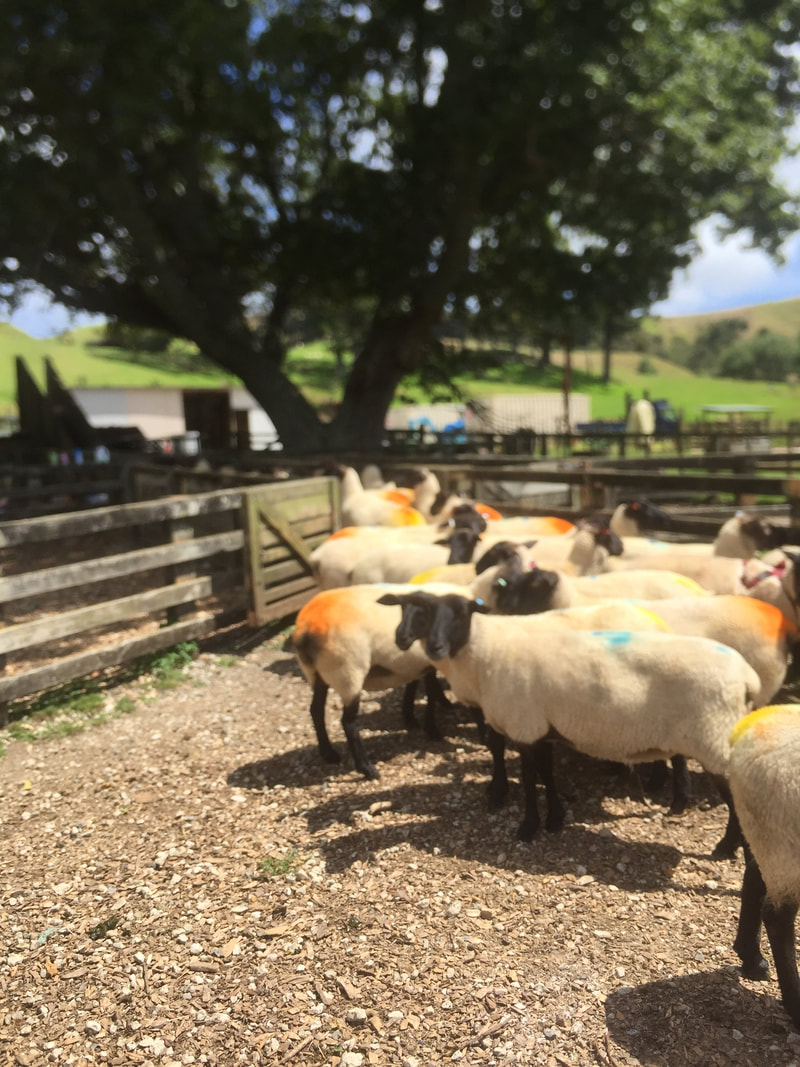Sheep are seasonal breeders. As the day length shortens in autumn (and there is less daylight), sheep come into "season", ie ewes start to ovulate and you'll see testicle size in rams increase. Often a ewe will ovulate just a single egg on her first heat cycle of the season, and as the season progresses is more likely to multiple ovulate, ie have two or more eggs shed from her ovaries. If all these eggs develop and become viable, then they can become fertilised and she could carry twins, triplets or more to full term. Rams have millions of sperm and are unlikely to affect the outcome of this (unless they are sterile, ie no viable sperm).
As the breeding season, ie autumn, carries on and turns into winter we see the highest fertility, on average. So, in the northern hemisphere in places like Canada, UK, Europe and northern USA, ewes start coming into season in late July/August and stay in season until day length begins to lengthen again in late winter (Jan/Feb). In the southern hemisphere, places like NZ, Australia, South Africa and South America, it is the opposite, so breeding typically starts as early as Christmas and goes until March/April. We call the summer period, between the end and the beginning of the next season the "deep anoestrus" period because it's quite difficult to get ewes to cycle at this time.
There are breed differences to seasonality; breeds like the Dorset, Dorset Horn and Merino come into season earlier than other breeds like Suffolk, Hampshires, Cheviot, Romneys and Perendales). Some breeds have a longer season towards the end, like the Finnish Landrace. Crossing a breed that is early with a breed that is later, with selection, can result in a flock with early and late lambing, and these typically work well in an accelerated breeding program (eg Finn/Dorset cross ewes).
Managing seasonality
If it really doesn't matter when your ewes lamb and you have plenty of feed and/or pasture available in spring, then breeding the ewes at the 2nd, 3rd or 4th cycle will yield the most lambs because you're taking advantage of the increase in fertility as the season progresses. Don't leave it too late or it will start to taper off again.
If you want lambs earlier in the season, to avoid a very sporadic lambing use a teaser ram, or an intact ram with a teaser harness. Have a marking harness on him as well, and monitor how many ewes he mounts each day. He will leave crayon marks on the ewes he mounts. Put him out when you think it is the earliest any ewes may be cycling. Here in NZ just north of Auckland we put teasers out in mid-January. When at least 1/3 are cycling (preferably half), we then feel it's worthwhile putting the breeding rams out. All the ewes that have been marked by the teaser have cycled at least once, and will be bred by your intact rams on their 2nd or later cycle. This will compact your lambing because you won't start too early with too few ewes coming into heat.
The other thing to take advantage of is the ram effect. It is now well known that the presence of rams after a period of absence of rams, brings ewes into season. So if you can, keep the boys far away from the girls for at least a couple of months before breeding season. Then put them in the paddock next door and their lovely odour will attract the ewes and bring them into heat. You'll see the ewes lined up along the fence next to the boys - who is teasing who? So by using a teaser ram, and the ram effect, you'll have more ewes come into season, at roughly a similar time (like within a week of each other, but certainly within a cycle), and if you know the % of ewes coming into heat because you've used a teaser with a marking harness, you can also then reduce the breeding into a single cycle of 17 days. When it comes to lambing all the ewes will then lamb within about 21 days of each other, meaning fewer sleepless nights, and more concentrated effort.
Plan for 10% of your ewes lambing each day with a peak potentially of 15% or more on one or two days (ram effect at work), and then there are no surprises!
This is what we do at Streamland Suffolks. We then use a backup ram about a month later just to clean up any that were missed for whatever reason and most years it is less than 10% of the flock. We get much better control over management of ewes and lambs, lambing, and weaning including weighing, vaccinating, drenching, etc. And this means a better lamb crop and better lambs!

 RSS Feed
RSS Feed
